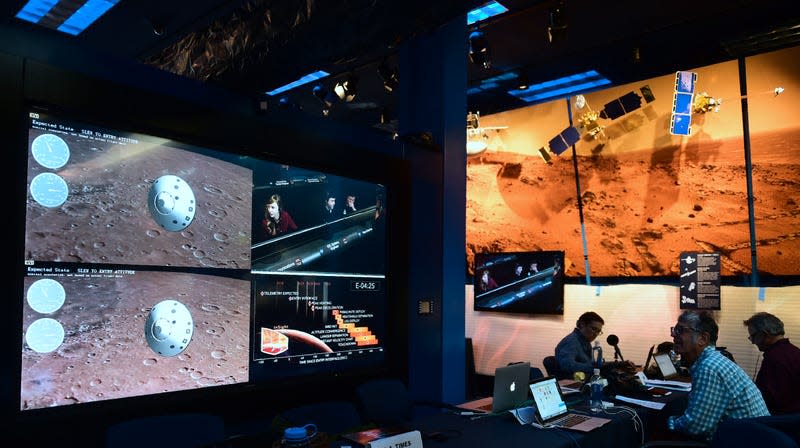NASA Wants To Melt Martian Soil Into 3D-Printable Building Material

The worst part of building things is dealing with the materials. Storing plywood and 2x6es around your house, lugging metal stock home from Lowe’s to patch those frame rails. Wouldn’t it be nice if you could just build your next project out of the stuff you already have laying around?
NASA certainly seems to think so, because it has decided the best way to build structures on the Moon and Mars won’t involve carrying a single bit of concrete into space. Instead, the administration’s Moon to Mars Planetary Autonomous Construction Technology (MMPACT) team wants to melt down lunar and Martian soil to create materials for high-tech 3D printers.
Read more
Of course, melting down naturally occurring materials is nothing new — it’s how every metal foundry turns raw minerals into shiny new products. The differences between the tutorial level of Tony Hawk’s Pro Skater 3 and Mars, however, are numerous. Wired dug into exactly the difficulties MMPACT will face as it takes this effort to the stars:
The first step toward 3D printing on the moon will involve using lasers or microwaves to melt regolith, says MMPACT team lead Jennifer Edmunson. Then it must cool to allow gasses to escape; failure to do so can leave the material riddled with holes like a sponge. The material can then be printed into desired shapes. How to assemble finished pieces is still being decided. To keep astronauts out of harm’s way, Edmunson says the goal is to make construction as autonomous as possible, but she adds, “I can’t rule out the use of humans to maintain and repair our full-scale equipment in the future.”
One of the challenges the team faces now is how to make the lunar regolith into a building material strong enough and durable enough to protect human life. For one thing, since future Artemis missions will be near the moon’s south pole, the regolith could contain ice. And for another, it’s not as if NASA has mounds of real moon dust and rocks to experiment with—just samples from the Apollo 16 mission.
...
There are other X factors to account for when building on the moon—and a lot can go wrong. Gravity is much weaker, there’s a chance of moonquakes that can create vibrations for up to 45 minutes, and temperatures at the south pole can get as high as 130 degrees Fahrenheit in sunlight and as low as –400 degrees at night. Abrasive moon dust can clog machinery joints and bring hardware to a screeching halt. During the Apollo missions, regolith damaged space suits, and inhaling dust caused astronauts to experience hay-fever-like symptoms.
When it comes to printing structures out of lunar or Martian regolith, the unknowns seem to far outweigh the knowns. But that’s the point of scientific experimentation — to turn those questions into answers, find what works or doesn’t and why. Who knows? Maybe future missions to Mars will find hospitable, comfortable shelter made right from the planet’s own rocks.
More from Jalopnik
Sign up for Jalopnik's Newsletter. For the latest news, Facebook, Twitter and Instagram.

 Yahoo Autos
Yahoo Autos 